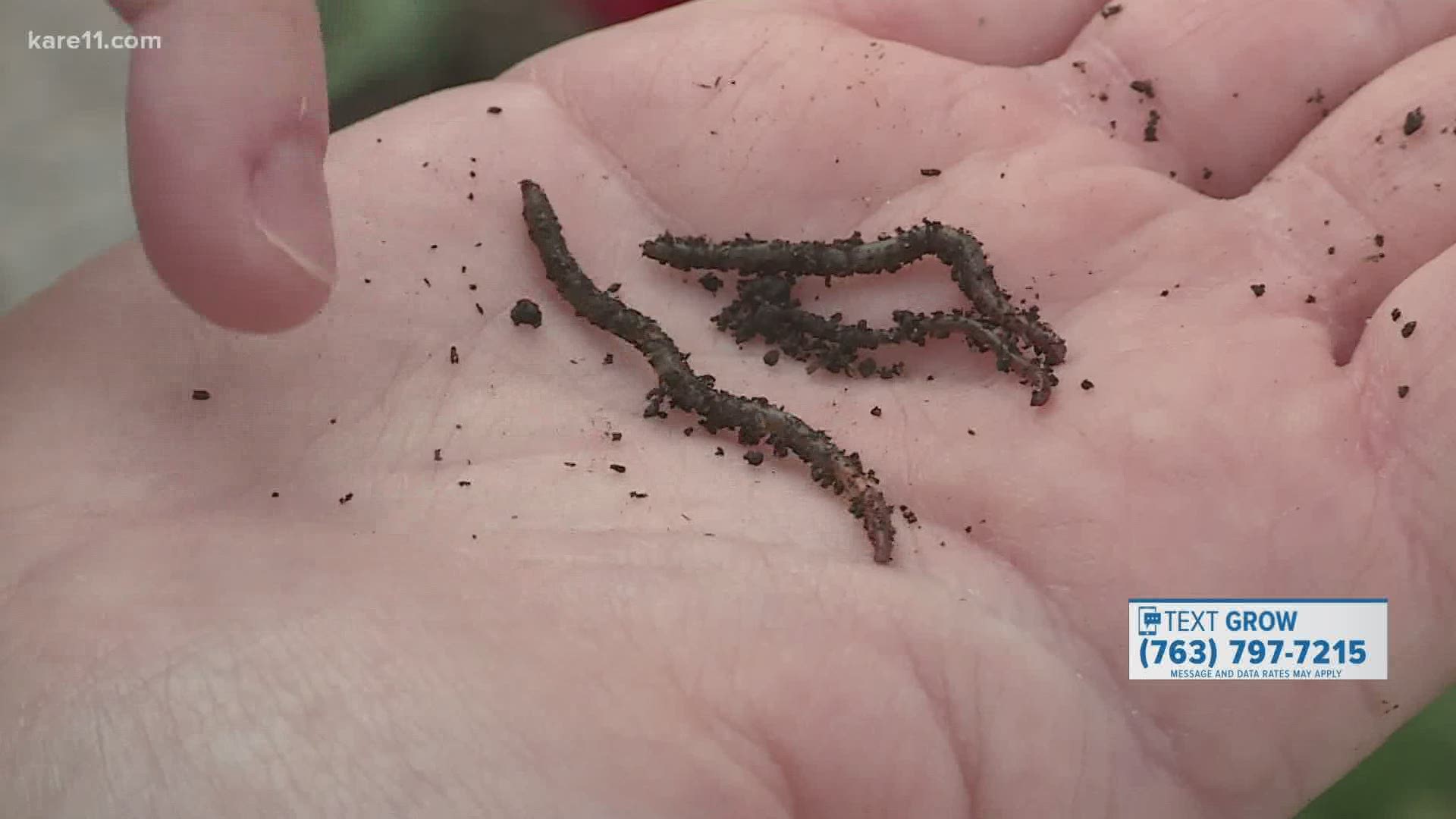GOLDEN VALLEY, Minn. — The latest invasive species here in Minnesota is jumping worms. They’ve actually been here for decades. But scientists are just discovering them now.
It sounds like the stuff nightmares are made of. Jumping worms, which are native to eastern Asia, are here in home gardens and forests in Minnesota. They get their name from the jumping or wiggle action they take when touched or disturbed. This map, shows their current dispersion through Minnesota.
The jumping worms live near the surface of gardens and forest floors. They rapidly eat and digest leaf litter, turning it into worm castings. Typically the castings of earthworms are great fertilizer, but because the jumping worms are so near the surface, the castings often are washed away with rainfall and do not provide fertilizer to the forest floor. That leaves the forest floor with a lessened ability to support native plant and animal life.
Erin Buchholz, Integrated Pest Manager for the University of Minnesota Landscape Arboretum, says the only way to deal with them is preventing them from moving into new areas. The first step to that is knowing if they are in your garden.
You’ll find them near the surface of gardens and the big wiggle or jumping actions are a dead giveaway for the species. Here’s how to identify them by look.
- Gray and cloudy in color, rather than pink like an earthworm.
- Their clitellum is whitish and completely surround the worms body, rather than an earthworm's that is more pinkish and does not completely surround the worm. It’s also flat on a jumping worm and slightly raised on an earthworm.
- The body is smooth and slimy.
If you do find jumping worms in your garden, do not share plants or soil. This can spread infection. Take care to carefully examine any plants or even mulch you bring in from community sources.
The adult worms do not survive our Minnesota winters, but eggs do over the winter in the top 4 inches of soil. Those eggs hatch in late spring. Worms grow rapidly through the spring to become up to 8 inches in length. We don’t know how many eggs an adult can lay.
Key jumping worm facts from the University of Minnesota Extension:
- As their name implies, they jump, wiggle and are very active.
- Jumping worms live in the leaf litter and the top few inches of soil on the forest floor.
- They change the soil texture to appear like coffee grounds, strip the soil of nutrients and can kill plants.
- Prevention is the only known way to manage them.
- Jumping worms should be disposed of in the garbage. Do not release them into the environment.
If you do spot jumping worms, report them in one of three ways:
- Use the EDDMapS Great Lakes Early Detection Network (GLEDN) free mobile app
- Report using the EDDMapS Midwest web-based mapping system for documenting invasive species.
- Report to the Minnesota Department of Natural Resources: Laura.Vanriper@state.mn.us or 651-259-5090.
Read more from the University of Minnesota Extension here: https://extension.umn.edu/identify-invasive-species/jumping-worms#reporting-1883161
RELATED: Grow with KARE: Our favorite hedges

